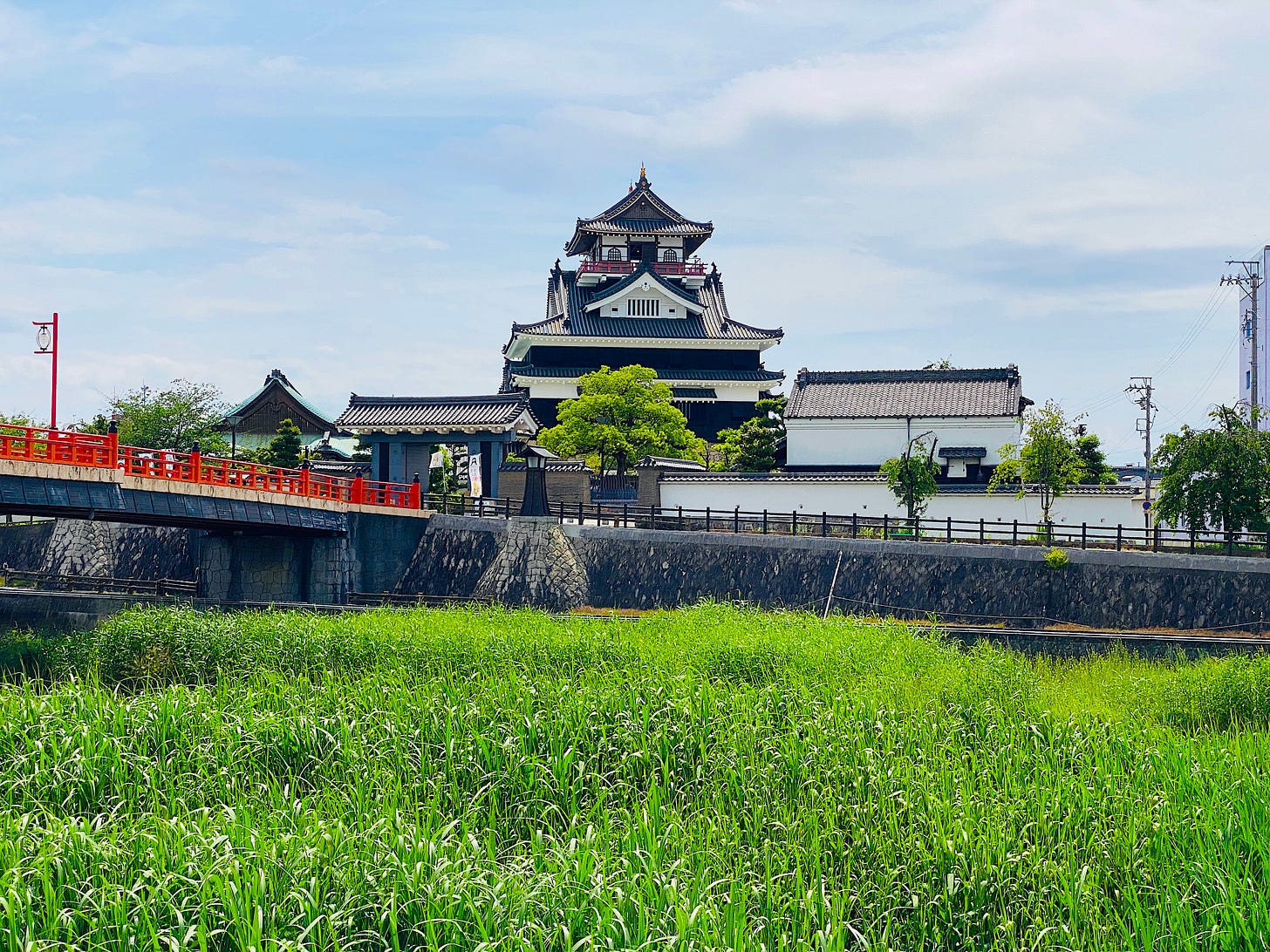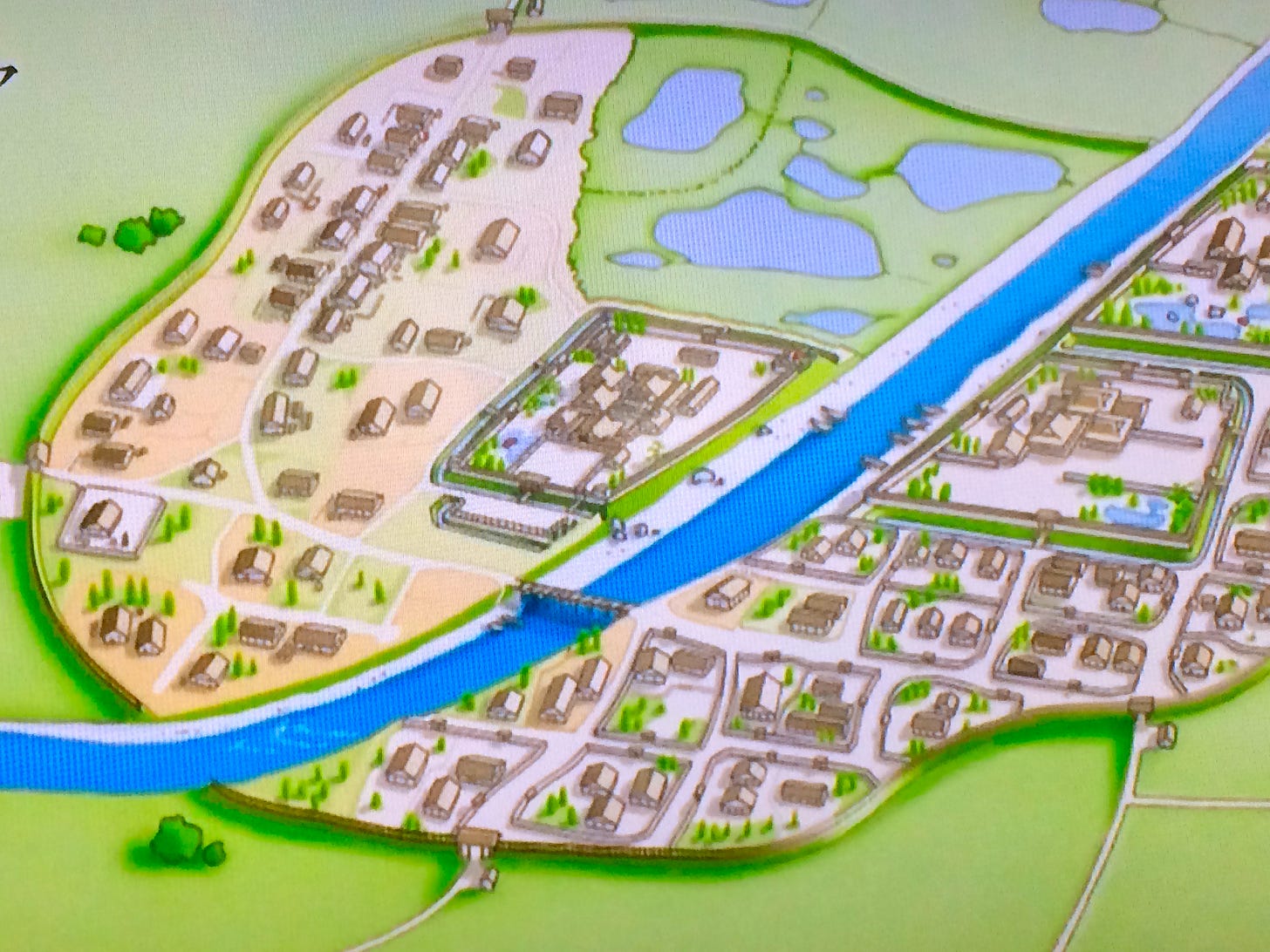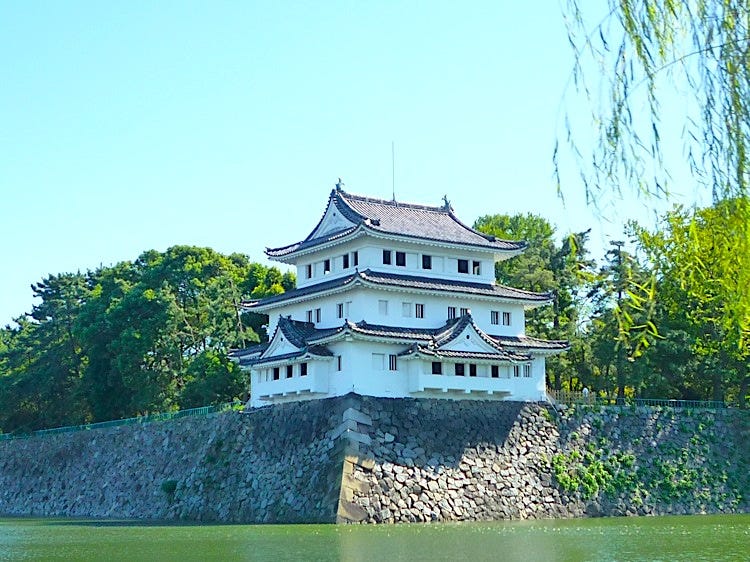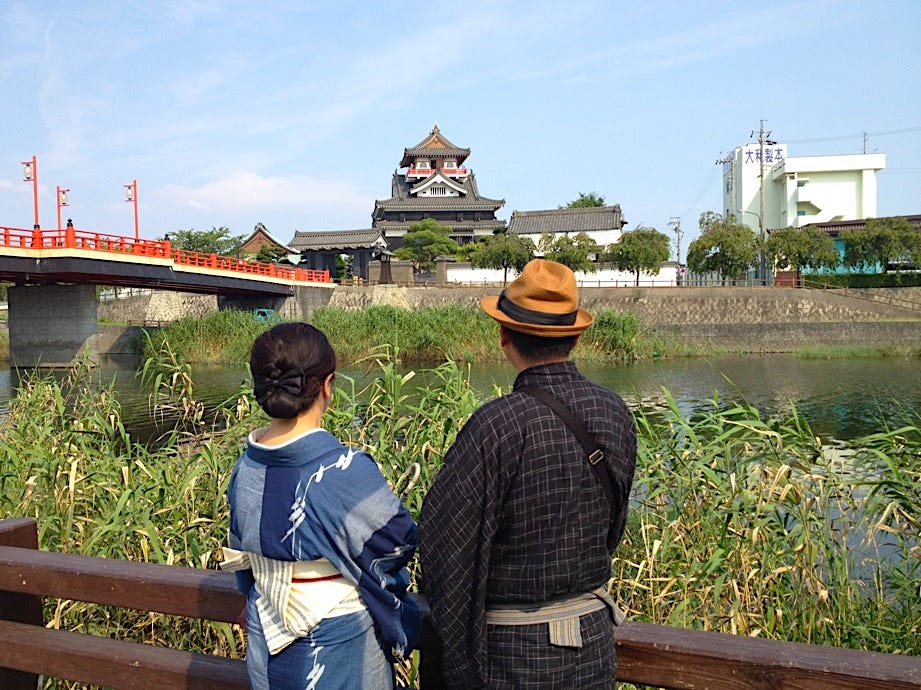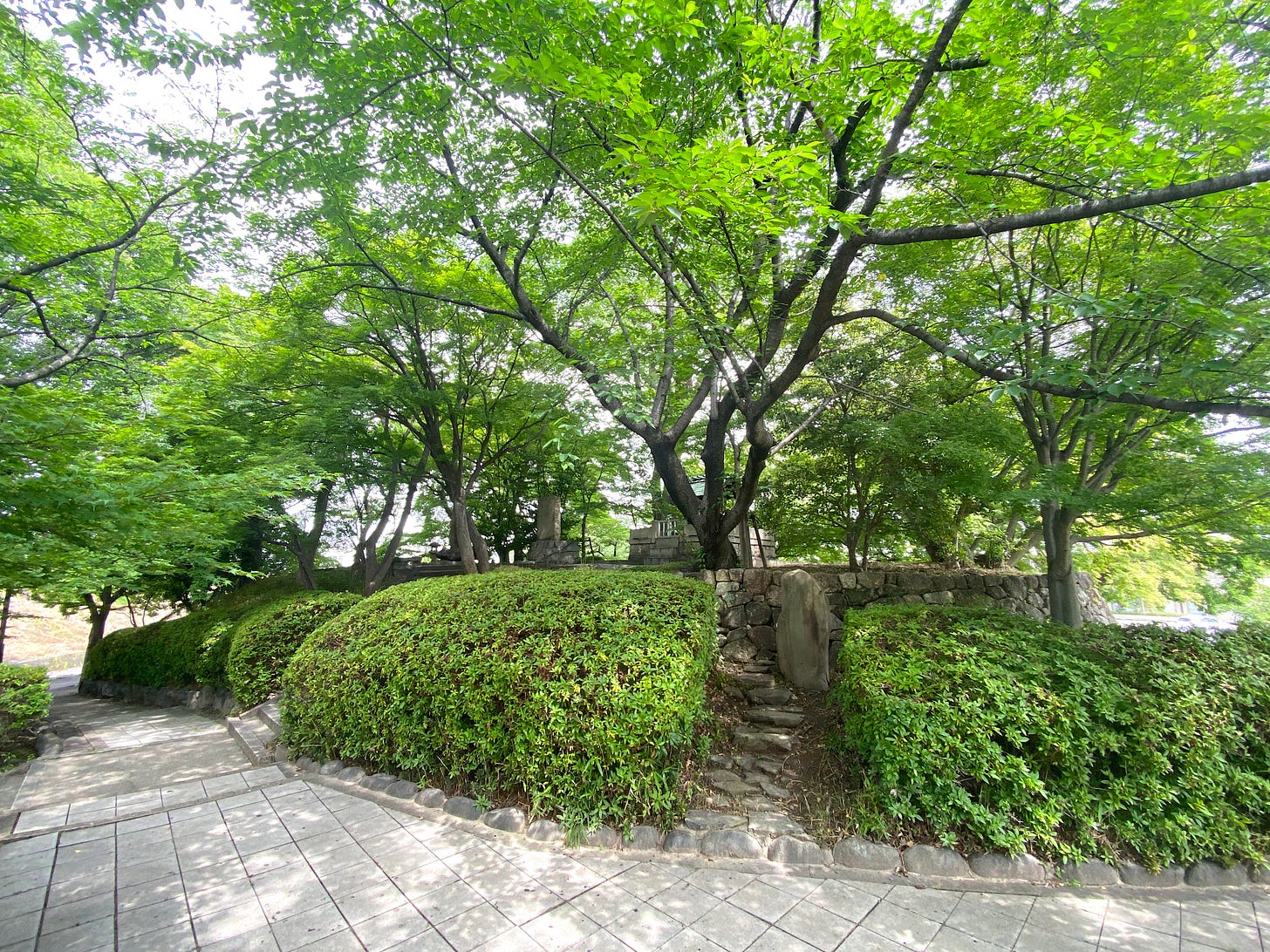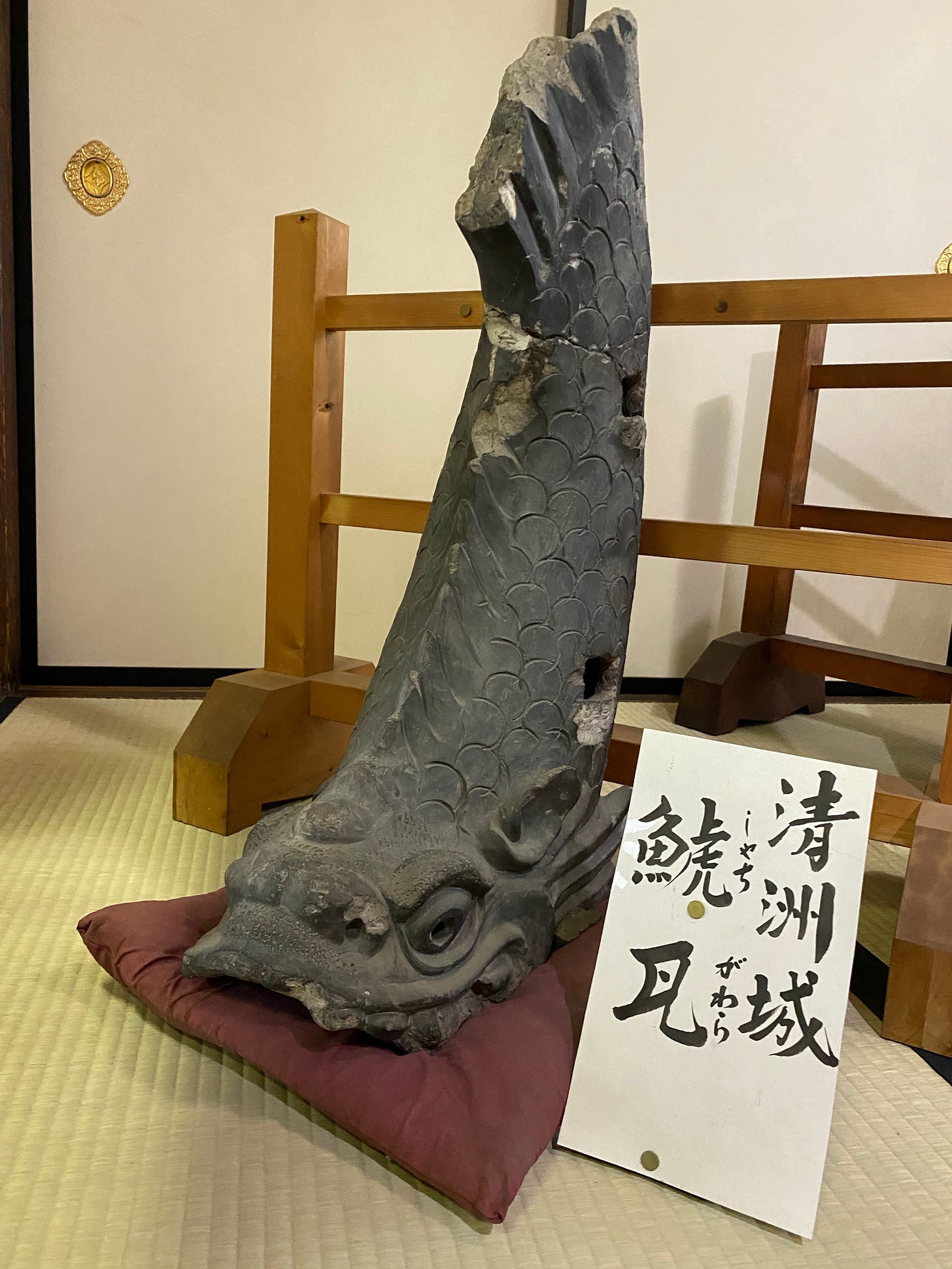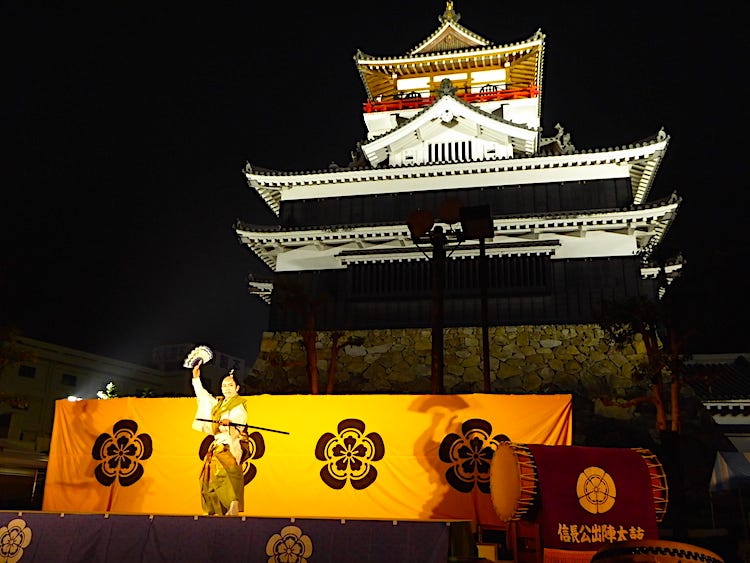Scatterings of Kiyosu Castle
Historically Important Kiyosu Castle Remains are Not Where You'd Expect!
One of the more significant samurai castles of the Warring States period, Kiyosu Castle was first built around 1405 by Shiba Yoshishige, the warrior Governor of Owari, as a major strategic defence, and later the seat of power for the Owari (now western Aichi Prefecture) region. In 1555, after his father’s death, Oda Nobunaga enlisted the help of his uncle, Oda Nobumitsu, and together they captured the strategically located Kiyosu Castle. Nobunaga then moved from his base from the original Nagoya Castle to Kiyosu.
Kiyosu Castle would remain Nobunaga’s base for many years. During that time, Kiyosu grew to be one of Japan’s more vibrant cities, spurred on by Nobunaga’s economic reforms and heightened security. The castle once extended 1.6 kilometers east-west, and 2.8 kilometers north- south, having an outer, central and inner moat system.
Kiyosu Castle was the starting point for many of the historically significant samurai battles that took place in the violent Sengoku or Warring States Period (1450-1615). The major battle of Okehazama (1560), in which Nobunaga is said to have defeated a 25,000 invading Imagawa army with just 2,500 of his own men. Also the battles of Anegawa (1570), and Nagashino (1575) are seen as Nobunaga’s first steps towards gaining control of the nation.
Even later battles such as Sekigahara (1600) were all initially launched from Kiyosu, then the property of the Tokugawa allied Fukushima Masanori.
On July 16, 1582, just weeks after Nobunaga was killed at the Honno-ji Temple in Kyoto, a vitally important meeting, known as the Kiyosu Kaigi, or the Kiyosu Conference regarding the Oda clan’s succession was staged at Kiyosu Castle. Here, Toyotomi Hideyoshi would usurp Oda power and authority. In 1586, four years after Nobunaga’s death, his second son Nobukatsu undertook large scale improvements, building a tower keep on the main Honmaru compounds’ northern edge. Kiyosu Castle would then see a variety of masters until the Battle of Sekigahara in 1600, before being decommissioned around ten years later.
Kiyosu-Goshi
In 1612, once Tokugawa Ieyasu’s splendid Nagoya Castle was mostly completed, the seat of government shifted from Kiyosu Castle to Nagoya, and with it, over 60,000 people, samurai, craftsmen, merchants, even temples and shrines were ordered to leave Kiyosu, moving the eight kilometers to the new castle town. New homes, shops, businesses, temples and shrines were rapidly re-constructed. The influx of people to Nagoya boosted the population and the economy. It wasn’t just the townsfolk that moved from Kiyosu to Nagoya either.
As the Tokugawa Shogunate had decided that one castle in the region was enough, many smaller castles in the surrounding area were demolished in favor of the new Nagoya Castle, and much of the stonework from the walls, as well as timbers from the various structures were utilized. Kiyosu Castle was decommissioned and destroyed for that very reason.
As per the times, nothing was wasted. The main castle keep of Kiyosu was dismantled and reconstructed as the three-story north-western corner watchtower of Nagoya Castle.
Yagura
Surrounding Japanese castles are various types of watchtower called yagura. These were defensive structures, as well as being for storage purposes, containing provisions for war, including weapons, armor, food, firewood and items necessary for the daily operations of a castle in both peace and siege times. Sumi yagura were the corner watchtowers. Usually two, three even five stories high, some yagura such as those at Nagoya, Edo and Osaka castles were in fact bigger than the main keeps of some smaller castles.
Nagoya Castle’s Inui Yagura
On the northwest corner of Nagoya Castle stands a sturdy looking yagura watchtower. the northwestern tower is also known as the Kiyosu Yagura, as the materials used were from the keep of Kiyosu Castle.
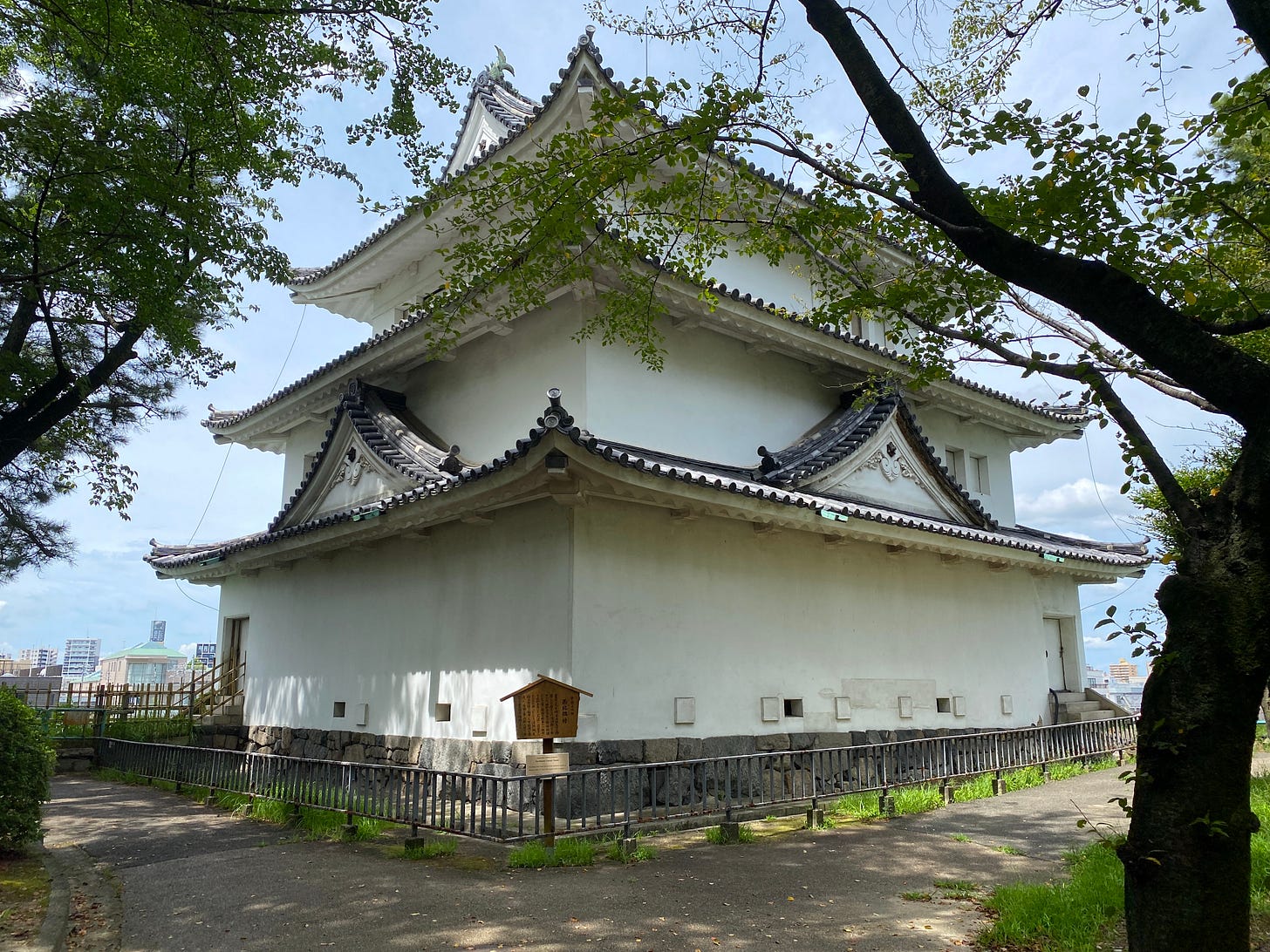
The hurriedly dismantled timbers of Kiyosu’s tower keep were brought to Nagoya Castle and used build the impressive northwest, or Inui corner tower. Although the same timbers were used, it appears that the parts were not used in the same position or role. Some support pillars became beams, roofing parts were used in walls, and the remains of old mortise joints, holes in the wood from the timber’s original usage can still be seen. These are accepted as proof of the timbers having come from Kiyosu.
Made a National Treasure along with 28 other structures within Nagoya Castle in 1930, this is one of only three towers to have escaped destruction in the 1945 fire-bombings of WW2. The now designated Important Cultural Asset turret is the second largest three-story corner turret surviving from the Edo period, the largest being the Fujimi Yagura at Edo Castle, used from 1657 as the main keep following Edo keep’s destruction from lightening induced fire. The Kiyosu yagura survived the aerial bombing of World War Two that destroyed much of Nagoya, and can still be seen standing proud over the moat of Nagoya Castle.
The Kiyosu Yagura used to be opened only one week a year to the public, but now in dire need of an overhaul, it has now been closed indefinitely to the public, with the next major restoration planned for around five years’ time.
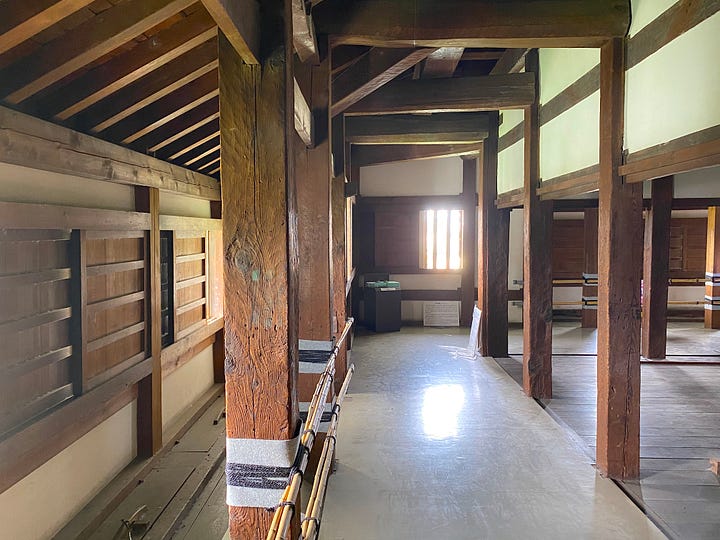
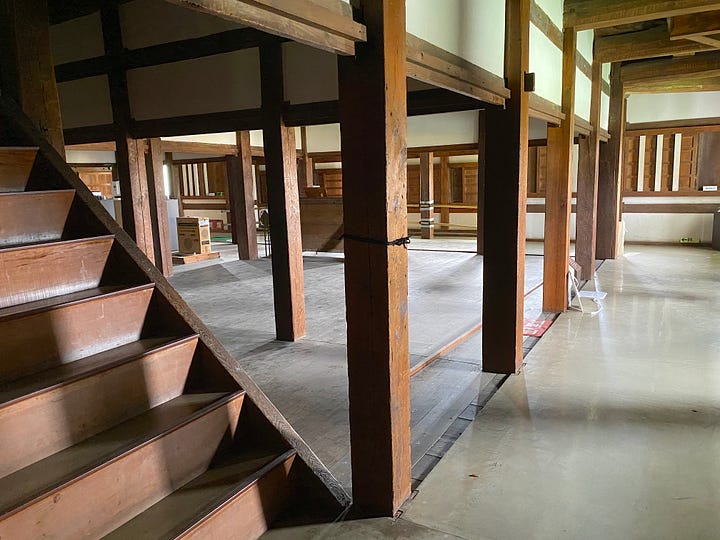
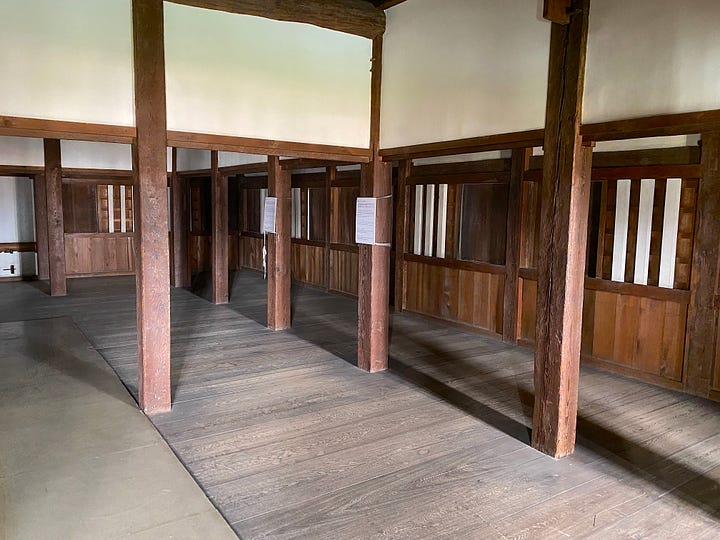
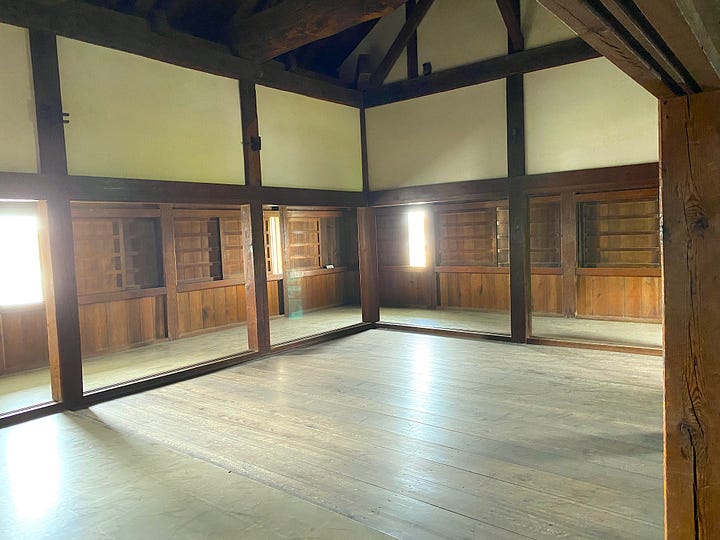
Kiyosu Castle Interior shots. Photos © 2023 Chris Glenn
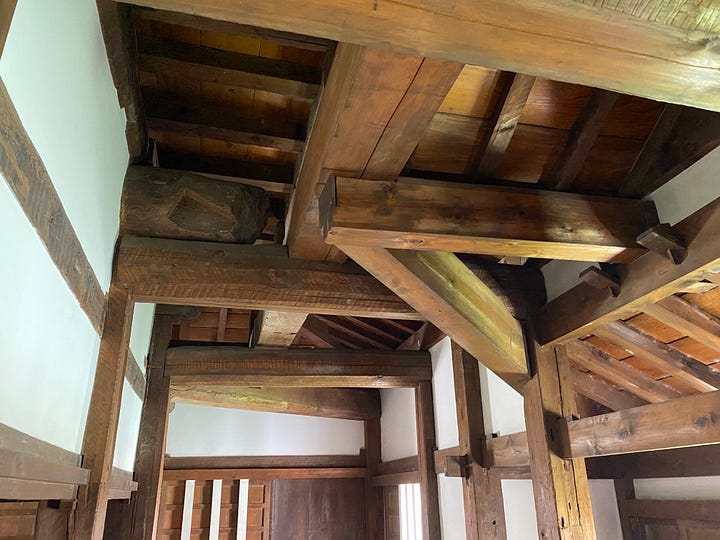
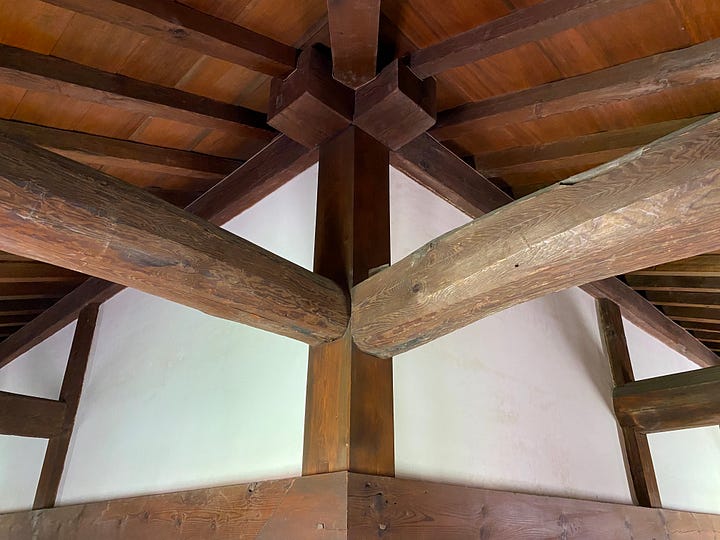

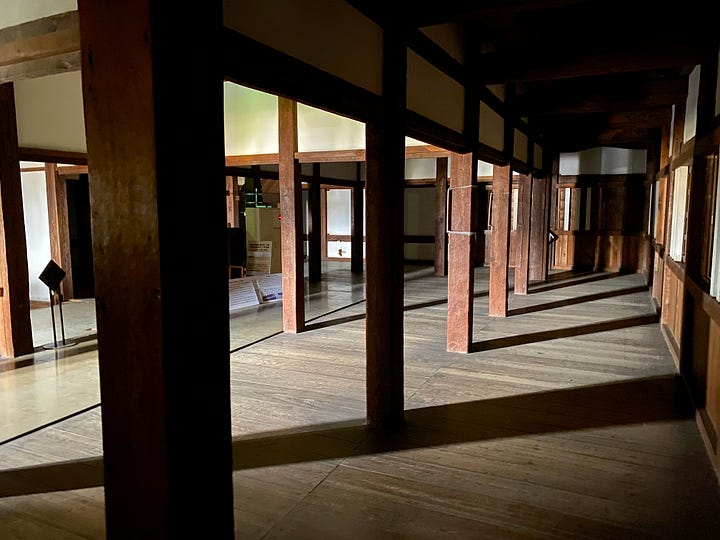
Kiyosu Castle and It’s Features Today
Kiyosu Castle was reconstructed in concrete in 1989, although based on nearby National Treasure Inuyama Castle. However, the castle tower is not where the real Kiyosu Castle keep used to be, but around 100 meters west on the opposite side of the river, across the red balustrade bridge in front.
Railroad lines, The JR Tokaido Line and the Tokaido Shinkansen Bullet Train run right through the middle of the actual Honmaru, the very center of Nobunaga’s Kiyosu Castle grounds separating it into two sections. The southern half of Kiyosu Castle is now a park featuring a rather handsome statue of Oda Nobunaga in full armor, with another of his wife, Princess No-Hime, looking on. The northern section, where the castle tower was once located, is now the site of the souvenir shop, the Kiyosu Furusato no Yakata. Below that is an armory, where one can see hand made samurai armor being replicated in aluminium. Armour crafted in this workshop is used in the annual Kiyosu Castle Nobunaga Festival parade. The grassy section behind the souvenir stall has a stone marker pointing out the keep site, and a small shrine dedicated to Nobunaga on it.

While Kiyosu’s timbers were used at Nagoya Castle, the original tiger-fish rooftop ornaments are now kept at the Sofuku-Ji Temple in Gifu. A former gate from Kiyosu Castle is now located at the Ryofuku-ji Temple in Aichi Prefecture’s Owari-Asahi area, while some of the decorated sliding doors from the castle remain preserved at the Soken-ji Temple in Nagoya City’s Naka Ward.
The current reconstructed Kiyosu Castle is now a symbol of Kiyosu City and a well-planned museum featuring some fascinating displays and artifacts regarding the castles’ history, its part in the many battles of the Period of Warring States, and the charismatic man who was its master for around ten years, Oda Nobunaga.




